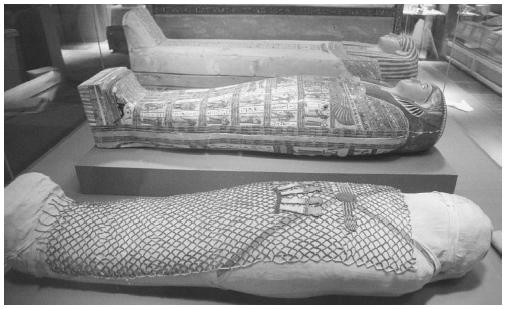Ancient Egypt and the Afterlife
Egyptian book of the dead
As early as the Eighteenth Dynasty, which began about 1580 B.C.E., most of the religious literature of ancient Egypt, including the Pyramid Texts—the oldest extant funerary literature in the world, dating back to as early as the fourth millennium B.C.E.—and certain revised editions of those texts, called the Coffin Texts, were brought together, reedited, and added to, and painted on sarcophagi and written on papyrus. This massive literary effort, the work of many authors and compilers, is now known as the Book of the Dead; its creators called it The Chapters of Coming Forth by Day. Although many known copies of this ancient work exist, no one copy contains all the chapters, which are thought to number around 200. The subject matter of each chapter is the beatification of the dead, but the chapters are as independent of one another as are the psalms in the Old Testament.
One of the most curious aspects of the Egyptian Book of the Dead is that while the work is filled with realistic and graphic scenes of the preparation of the deceased for mummification, there are no illustrations depicting death and dying. For a people obsessed with the mortuary and funerary aspects of death, the Egyptians seldom dealt with the actual ways in which people lost their lives. Some scholars have observed that it was not so much that the ancient Egyptians wished to avoid the unpleasant topic of death and dying; it was rather that they never really formulated any clear conception of the nature of death or of its cause.
By the time the text of the Book of the Dead was being copied on rolls of papyrus and placed in the tombs of the dead, a great social and religious revolution had taken place. Whereas the Pyramid Texts were meant only to be inscribed on the sarcophagi of the royals, it was now decreed that anyone who could afford the rituals would be entitled to follow the god Osiris into the afterlife. The cult of Osiris had now been extended so that any deceased human, commoner or noble-born, who had the means could become an "Osiris."
The most important ceremony associated with the preparation of the dead was the opening of the eyes, mouth, ears, and nose of the deceased. This rite was thought to guarantee

The Book of the Dead also contained certain holy incantations that were designed to free the ka from the tomb and allow it to be incarnated again. The spirit might experience an existence as a hawk, a heron, or even a plant form, such as a lotus or a lily, moving along through various expressions of the life force until, after about 3,000 years, it could once again achieve rebirth as a human.

Comment about this article, ask questions, or add new information about this topic: